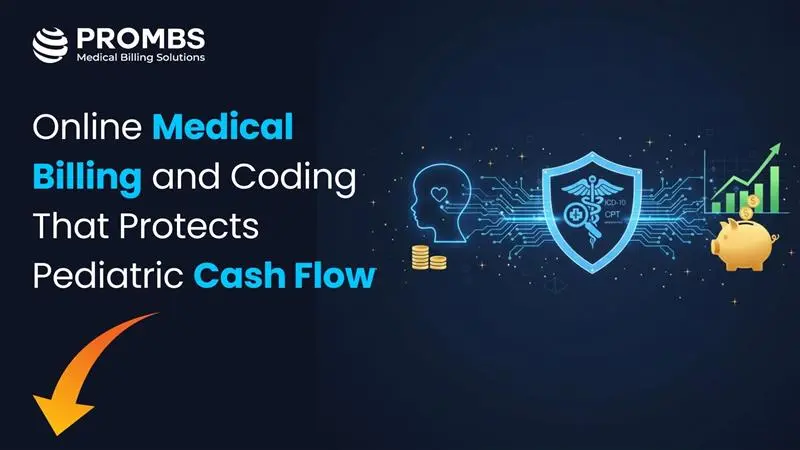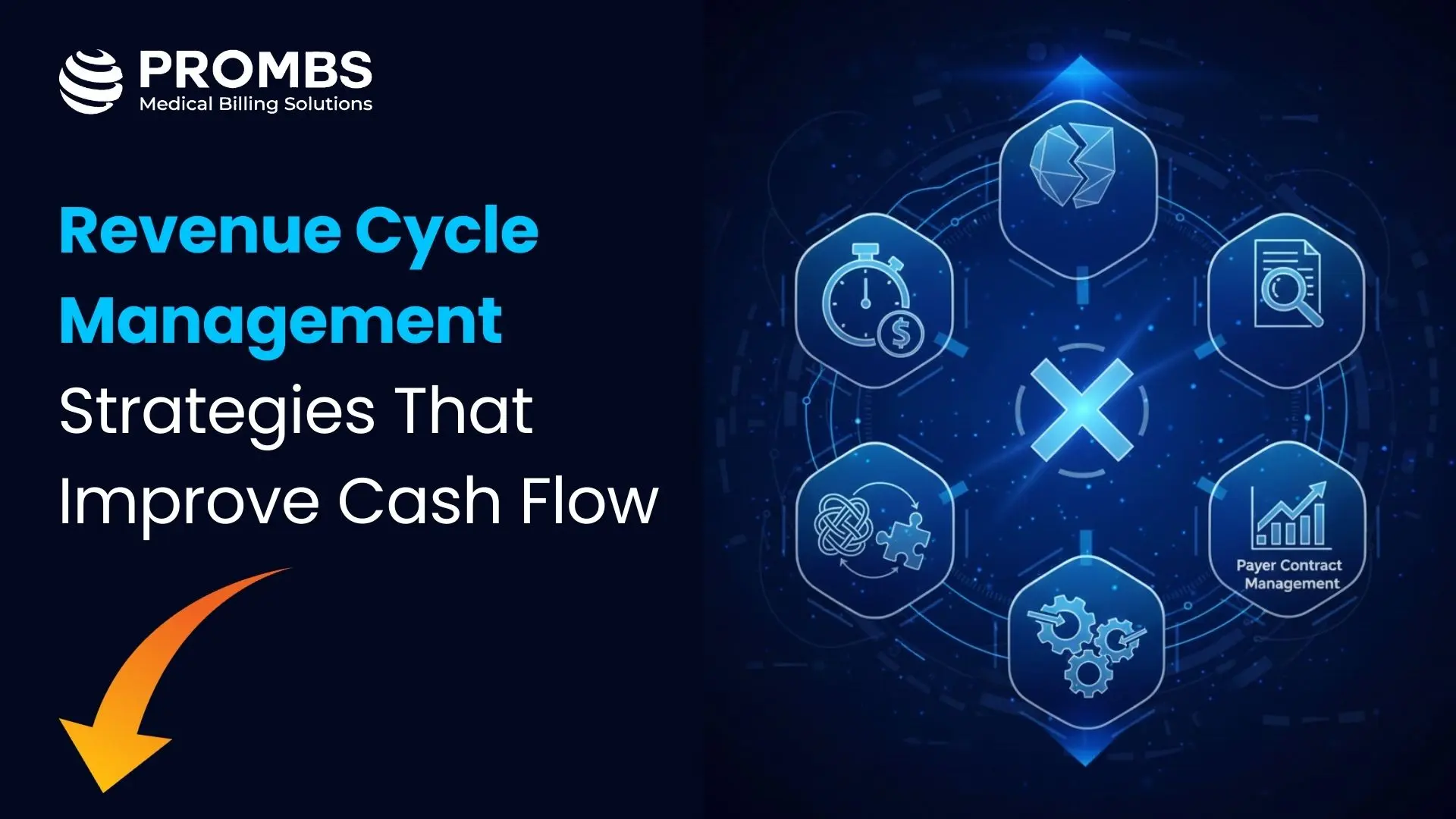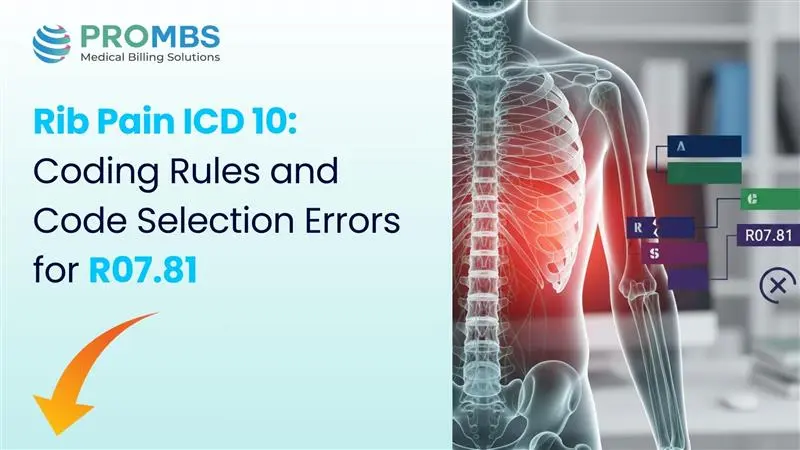Introduction
Gastroenterology coding compliance isn’t just paperwork. It is survival. In a specialty where every claim tells a story of precision, one missing detail can cost thousands. What is the best way to master it? Let’s find out.
Studies from OIG show that most denials come from poor documentation, not payer bias. A missing modifier, an outdated CPT, or a vague note can trigger audits and cause revenue loss. This guide gives you control, clarity, and clean claims. It walks through the essentials of coding rules, documentation strength, audit systems, and how AI is changing compliance for good.
| Chapter | Title | Description |
|---|---|---|
| Introduction | Why Compliance Matters in Gastroenterology | Understand how gastroenterology coding compliance shapes revenue, trust, and audit protection. |
| Chapter 1 | The Foundation of Gastroenterology Coding Compliance | Learn the four key pillars of accurate coding, proper documentation, continuous education, and regular auditing that keep compliance strong. |
| Chapter 2 | The Hidden Costs of Coding Errors | Discover how small coding mistakes quietly drain revenue and increase payer attention. |
| Chapter 3 | Mastering CPT, ICD-10, and Modifier Use | Explore how these code systems work together and how modifiers ensure precision and compliance. |
| Chapter 4 | Documentation Excellence: The Core of Compliance | See why detailed documentation is the most powerful defense against denials and audit risks. |
| Chapter 5 | Building a Robust Audit and Compliance Program | Learn how internal audits, external reviews, and corrective actions safeguard your revenue. |
| Chapter 6 | Leveraging AI and Technology for Smarter Coding | Understand how AI validation and automation reduce human error and improve coding accuracy. |
| Expert Insights | Wisdom from Industry Leaders | Gain perspective from experienced professionals on compliance, coding, and education. |
| Conclusion | Start Strengthening Your Compliance Today | Turn lessons into action with clear steps to build a culture of consistent compliance. |
| About the Author | Saif Ullah, CEO, ProMBS | Learn about the author’s experience in revenue cycle management and his approach to building compliance through education and innovation. |
Chapter 1: The Foundation of Gastroenterology Coding Compliance
What makes compliance the backbone of a medical practice? Accuracy. Transparency. Proof. Every claim you submit is more than a request for payment. It is a legal record. CMS views it as a statement of truth that what you billed truly happened as documented.
In gastroenterology, compliance is not built in a day. It grows, layer by layer, on four solid pillars. Accurate coding. Proper documentation. Continuous education. Regular auditing. Each one stands on its own, but together they hold the entire system upright. Remove one, and the rest begin to shake.
Without accurate coding, even flawless documentation loses its strength. Without documentation, education becomes theory without proof. Without learning, audits become blind routines. And without auditing, every rule slowly fades into habit and neglect. When these four pillars work together, compliance stops being a burden. It becomes instinct.
It becomes the rhythm that keeps your practice honest, stable, and trusted.
Accurate Coding: Your First Line of Defense
CPT codes describe what you did. ICD-10 codes explain why you did it. Together, they form the backbone of billing. Even one mismatch, such as using a diagnostic code for a screening colonoscopy, can collapse the system.
The rule is simple. If it is not accurate, it is not compliant. Coders should review each chart carefully, use updated code books, and check payer bulletins. A second-level coding review often raises clean claim rates above 97 percent. When accuracy leads, payments arrive faster, denials fall, and trust grows.
Proper Documentation: The Proof Behind Every Code
If coding tells the story, documentation provides the evidence. CMS states it clearly: If it is not documented, it did not happen. Every colonoscopy, biopsy, or anesthesia service must explain what was done, why it was needed, and what the outcome was.
Good documentation protects both revenue and reputation. Train providers to document thoroughly and consistently. Smart EHR templates can help capture essential details such as lesion size, pathology site, and follow-up care.
When documentation is strong, compliance feels natural.
Continuous Education: Staying Ahead of Change
AMA updates codes every year. CMS revises rules every quarter. Without education, yesterday’s accuracy becomes today’s risk. Hold monthly training sessions. Review denials together. Turn each mistake into a lesson. When coders and billers learn from real claims, they understand the why, not just the what. Knowledge keeps compliance sharp. Awareness keeps teams confident.
Regular Auditing: The Built-In Safety Net
An audit is not punishment. It is prevention. The HFMA recommends quarterly internal audits for all high-volume specialties. Randomly sample claims, track recurring errors, and measure coder accuracy. Use the results for coaching instead of criticism. When staff see audits as tools for growth, accuracy becomes habit.
Audit data reveals weak points early, like missing modifiers or incomplete documentation. Fix them quickly, and revenue becomes steady and predictable.
Chapter 2: The Hidden Costs of Coding Errors
Why do small mistakes cause such big damage?
A missing modifier, a wrong diagnosis, or a copied note seems harmless until it repeats. AMA reports that coding errors cost U.S. practices billions each year in preventable revenue loss. HFMA adds that up to five percent of annual hospital revenue disappears due to documentation and coding mistakes.
The Ripple Effect of Repeated Mistakes
What happens when errors stack up? Payers notice. When they see recurring mismatches, they start watching your claims. CMS warns that repeated documentation or coding inconsistencies may trigger repayment demands. Once that pattern appears, your claims face extra review. The result is delayed cash flow and lost trust.
Common Traps in Gastroenterology Coding
GI billing is complex. Bundled services, overlapping procedures, and modifiers that change outcomes. Some of the most common revenue leaks come from missing modifier 33 or PT during colonoscopy conversions, billing bundled procedures separately, and weak CPT-to-ICD-10 linkage. OIG data shows that gastroenterology claims often rank among the top specialties for overpayments due to poor documentation.
The Fix: People and Tools Together
Hire trained coders who understand intent, not just numbers. Use AHIMA-approved software that flags mismatched codes and modifiers before submission. Automate validations, but never replace human review. Precision should be your daily habit, not your yearly goal.
Chapter 3: Mastering CPT, ICD-10, and Modifier Use
How do CPT, ICD-10, and modifiers work together? Like a three-part story. Each part must fit the others. CPT describes what was done. ICD-10 explains why it was done. Modifiers clarify how it was done. When all three align, payers pay faster. When they don’t, denials follow.
The Fix: People and Tools Together
A screening colonoscopy (CPT 45378) becomes therapeutic with polypectomy (CPT 45385). What should you do now? Many coders use modifier 59, but that is incorrect. For commercial and Medicaid claims, use modifier 33. For Medicare, use modifier PT.
These modifiers show that a preventive screening became therapeutic, aligning with CMS preventive cost-sharing rules. Modifier 59 indicates a distinct service, which does not apply here. One wrong modifier can flip a compliant claim into a liability.
Documentation-Driven Coding
Each GI code depends on documentation details such as lesion size, biopsy site, and completeness of the exam. Coders should confirm the provider’s notes before finalizing a code. Incomplete notes lead to incomplete payment.
Essential GI Codes and Documentation Tips
| Procedure | CPT Code | Key Documentation Tip |
|---|---|---|
| Diagnostic colonoscopy | 45378 | Note whether the exam was complete or incomplete |
| Colonoscopy with polypectomy | 45385 | Record the number, size, and location of polyps |
| Upper GI endoscopy with biopsy | 43239 | Include biopsy site, method, and pathology details |
| ERCP with stent placement | 43274 | Describe cannulation and fluoroscopy use |
| Capsule endoscopy | 91110 | Verify completion and medical indication |
Common Modifiers and When to Use Them:
- 59 – Separate procedural service
- 33 – Preventive service
- 26 / TC – Professional versus technical component
- 52 – Reduced or incomplete service
Modifiers are signals of precision, small details that tell payers the full story behind every procedure. They show when a service was distinct, when it was preventive, or when it was only partially completed. Each one carries meaning, and even a simple oversight can turn a clean claim into a denial. Use them with care, verify payer rules before every submission, and treat modifiers not as add-ons but as essential markers of accuracy and compliance.
Chapter 4: Documentation Excellence: The Core of Compliance
What makes documentation excellent? Clarity, detail, and truth. Good notes are simple, complete, and easy to verify. Each record must show why the procedure was performed, what was found, how it was done, and what happens next. From pre-procedure consent to post-procedure follow-up, documentation forms the trail of truth.
CMS auditors read line by line. Missing a signature or copying a note can invalidate a claim. Use structured EHR templates that prompt for mandatory details such as specimen source or pathology impression. Accuracy is your protection. Every line is a defense against denials.
💡 Pro Tip: If it isn’t documented, it doesn’t exist, and if it doesn’t exist, it won’t get paid. Every note, every signature, every detail is a piece of proof that turns care into compliance and work into revenue. What you don’t record, you lose, not only payment but also trust.
Chapter 5: Building a Robust Audit and Compliance Program
What separates practices that stay safe from those that don’t? Preparation. A proactive audit system catches issues before they grow. HFMA and AHIMA both recommend quarterly reviews to identify errors early.
How Leading GI Practices Audit
They set clear targets:
- Coder accuracy at 95 percent or higher
- Denial rate tracked by root cause
- Documentation matched against payer rules
They audit randomly, not selectively, to give everyone a fair check. Findings are shared openly so everyone learns. When audits become part of culture, compliance becomes habit.
External Reviews: The Extra Layer of Defense
External audits reveal what internal reviews might miss. They show payers that you are serious about quality. Transparency builds credibility and protection.
Chapter 6: Leveraging AI and Technology for Smarter Coding
Can technology make compliance smarter? Absolutely. AI is changing medical billing forever. It scans, detects, and predicts. At ProMBS, our AI validation tool reviews each claim before submission. It flags missing modifiers, mismatched codes, and incomplete notes in real time. It learns from denials and improves accuracy with every cycle.
Key Benefits:
- Real-time error detection
- Pattern recognition for recurring denials
- Seamless EHR integration
- Cleaner claims and faster payments
But technology doesn’t replace coders. It empowers them. AI handles the repetition. Humans apply judgment. When both work together, compliance becomes a rhythm instead of a struggle.
Expert Insights from Industry Leaders
“In gastroenterology, compliance isn’t about fear. It is about trust.”
Dr. Alan Brooks, MD
“Tracking denial patterns is the foundation of revenue protection.”
Saif Ullah, CEO, ProMBS
“Education is the best compliance tool. One hour of training can save thousands.”
Maria Chen, CPC
Start Strengthening Your Compliance Today
Mastering Gastroenterology Coding Compliance is not about perfection. It is about systems that catch mistakes before they cost you. Train your team. Audit regularly. Automate wisely. The more proactive you are, the stronger your revenue becomes. When compliance turns into culture, accuracy becomes instinct. And revenue follows.
📞 Schedule a Free Gastro Coding Compliance Audit with Pro-MBS
Visit Our Website or email info@prombs.com to begin.
About the Author
Saif Ullah is the CEO of Pro Medical Billing Solutions (ProMBS), a leader in medical billing and compliance technology. With over a decade of experience in Revenue Cycle Management, he helps healthcare providers improve accuracy, streamline compliance, and strengthen profitability through education and innovation.



